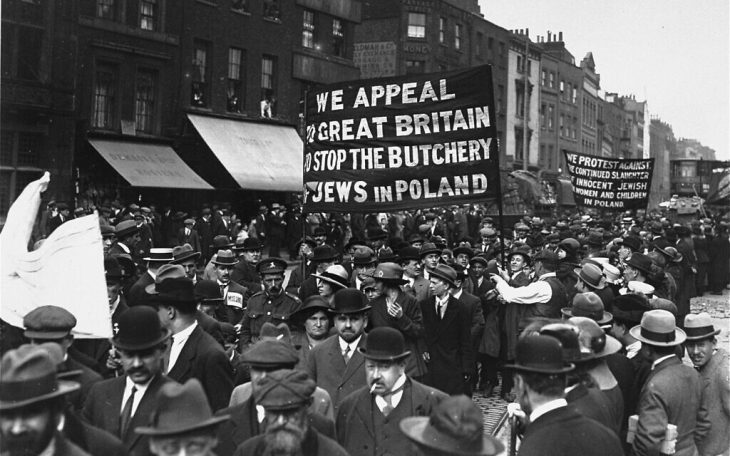
Word of the Day: Coddle
Today’s word of the day, courtesy of the Word Guru, is coddle. This verb means “to treat with excessive indulgence or care, often in an overprotective or pampering manner.” Dictionary.com has two definitions: “to treat tenderly; nurse or tend indulgently; pamper” and “to cook (eggs, fruit, etc.) in water that is just below the boiling point; cook gently” (https://www.dictionary.com/browse/coddle). And it is pronounced / ˈkɒd l /. Now, I have to admit that I have never heard coddle used according to that second definition, but then again, I don’t spend much time in the kitchen.
I was also unaware that coddle has a near homophone, caudle (pronounced / ˈkɔd l /), which means “a warm drink for the sick, as of wine or ale mixed with eggs, bread, sugar, spices, etc.” (https://www.dictionary.com/browse/caudle). The /ɒ/ is pronounced like the vowel in cot. The /ɔ/ is pronounced like the vowel in caught. But in English there is a phenomenon called the cot-caught merger, where the two sounds merge into one in certain dialects, particularly in North America, especially Canada (https://en.wikipedia.org/wiki/Cot%E2%80%93caught_merger). There are other word pairs that also become homophones, like stock and stalk, nod and gnawed (ibid.).
The verb to coddle entered the English language “c. 1600, ‘boil gently,’ probably from caudle (n.) ‘warm drink for invalids’ (c. 1300), from Anglo-French caudel (c. 1300), ultimately from Latin calidium ‘warm drink, warm wine and water,’ neuter of calidus ‘hot,’ from calere ‘be warm’ (from PIE root *kele- (1) ‘warm’).
“The verb meaning ‘treat tenderly, make effeminate by pampering’ first recorded 1815 (in Jane Austen’s Emma), but the connection to the other word is uncertain; it might as well derive from caudle,” the 1300s noun that came in from the French (https://www.etymonline.com/search?q=coddle).
The PIE root *kele- gives us a wide variety of words: calory, cauldron, caldera, scald, and more. And if you’re familiar with Spanish, you may see caliente, caluroso, and cálido as coming from the same root.
According to On This Day, on this date in 1918, a pogrom occurred in Seredino Buda (or Seredyna-Buda), a small city in northern Ukraine.
Prior to the Russian Revolution in 1918, when Ukraine was part of the Russian Empire, Jews were allowed to live only in the Pale of Settlement, which “included all of modern-day Belarus and Moldova, much of Lithuania, Ukraine and east-central Poland, and relatively small parts of Latvia and what is now the western Russian Federation” (https://en.wikipedia.org/wiki/Pale_of_Settlement). This Pale lasted from 1791 to 1917.
Restrictions were placed upon the Jews living in the Pale of Settlement throughout the period. They were limited in their ability to educate. They were restricted in what they could do for a living. They lived, for the most part, in relative poverty, although the Jewish system of charity helped many. And throughout the period there were pogroms.
According to Jeffrey Veidlinger, “Between 1918 and 1921, over 1,000 anti-Jewish riots and military actions—both of which were commonly referred to as pogroms—were documented in about 500 different locales throughout what is now Ukraine. This was not the first wave of pogroms in the area, but its scope eclipsed previous bouts of violence in terms of the range of participants, the number of victims, and the depths of barbarity” (https://www.tabletmag.com/sections/history/articles/killing-fields-ukraine). He says that the number of Jews killed in these few short years was at least 40,000 and probably more than 100,000.
Who was responsible for these pogroms? According to Veidlinger, “The Bolsheviks despised them as bourgeois nationalists; the bourgeois nationalists branded them Bolsheviks; Ukrainians saw them as agents of Russia; Russians suspected them of being German sympathizers; and Poles doubted their loyalty to the newly founded Polish Republic” (ibid.). The pogroms of 1918-1921, which were frequently carried out at the local level, were a prelude to the Final Solution that was to come just twenty years later.
The pogroms of 1918-1921 in eastern Europe also led to the migration of a lot of Jews to other countries—in western Europe, in the United States, and in Palestine. In fact, the desire for a Jewish homeland, which had begun in the later nineteenth century, received a big push because of the persecution of Jews in Europe in this period. The Holocaust only made the desire for a Jewish state stronger.
One of the things I have learned about Israel since the October 7, 2023, terrorist attack on Israel was that homes in Israel have built-in safe rooms. I cannot imagine, living in South Carolina as I do, having bombs sent my randomly to the point where I need to have a safe room in my home. I also cannot imagine armed bands coming through my small town to deprive people of their property, their businesses, their homes, and even their lives. Maybe I have been coddled.
The image today is of “British Jews marching in protest of the 1918-1921 pogroms. (Courtesy of Jeffrey Veidlinger)” (https://www.timesofisrael.com/20-years-before-the-holocaust-pogroms-killed-100000-jews-then-were-forgotten/). I actually considered using much more horrific images, like of dead bodies, but I decided this one would be more acceptable.